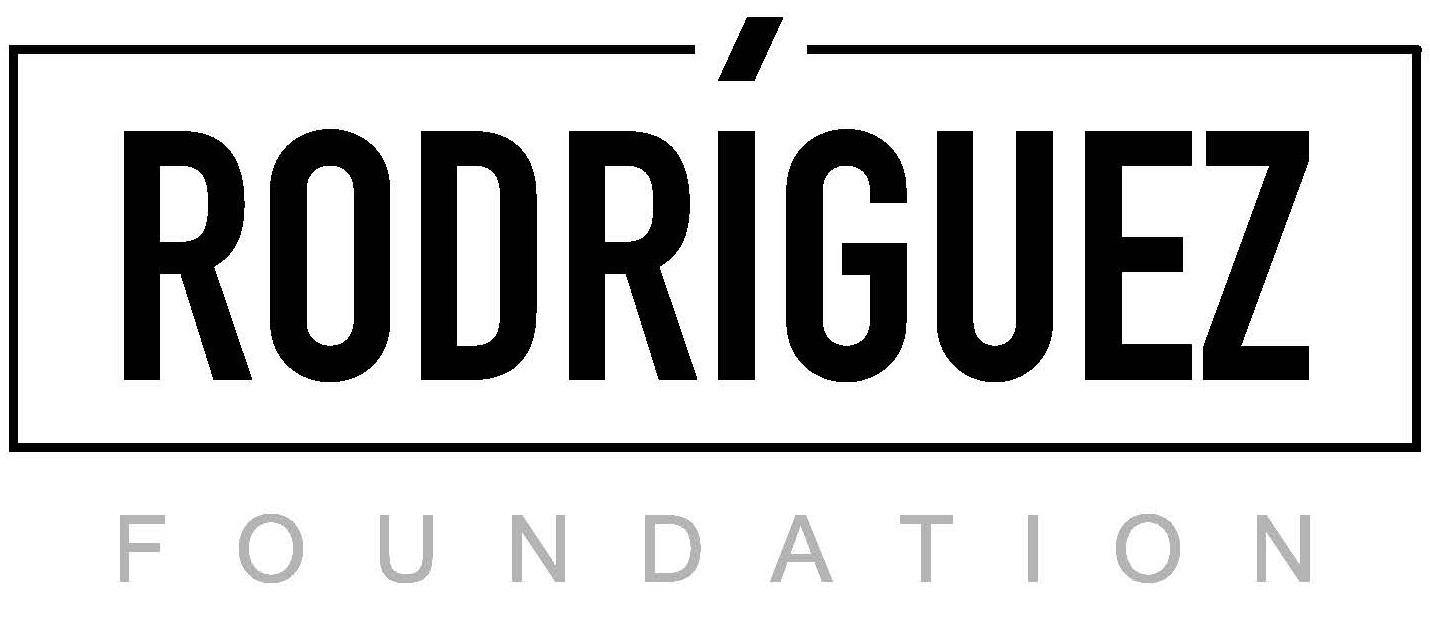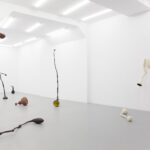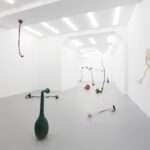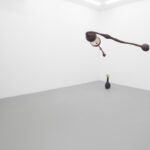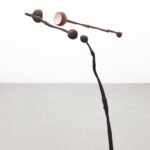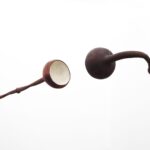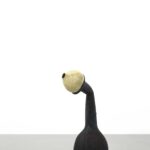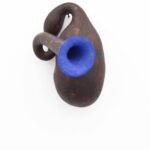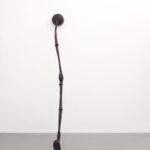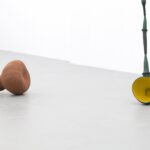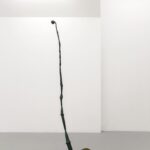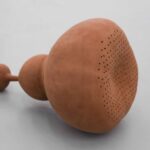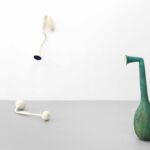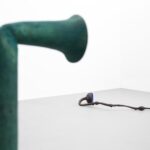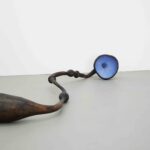Dalila Goncalves
Dream Speakers
20.10 - 19.11.2022
Among many objects piled up on the workbench of Dalila Gonçalves in Porto, there is a book by Gonçalo M. Tavares, full of travels, reads, and notes. Its colour is canary yellow and it is a dictionary about various artists. The publishing house, Relógio d’água (Water clock), leads us to another concept that can be found in many of the gourds* that have invaded the artist's studio in Bonfim. I open the book at page 84, and I read the last phrase: an emotional distortion. It speaks of Elmgreen & Dragset, although in between the lines we can find references to Dalila's creative method. I jump to page 68, about Joseph Beuys, with this sentence at the end: A thousand conferences are not enough to explain a single stone. Next, page 29, a fragment about Cildo Meireles closed by the following sentence: As a coin that has value below and above the ground; put poetry into circulation. The fantastic ingredient introduced by Tavares to his writings addresses the premonition of many works by Dalila Gonçalves, almost like an aphorism: reality always exceeds fiction. The presence of the narrator in the text is like a traveller entrusted to chance, wandering without destination, like the artist. She is a traveller asking meticulous questions about the details preserved from the past that help her to reconstruct a puzzle of the lives of several other people. Dalila decides between ideas that helped advance each of those lives, all of them endowed with a fair amount of eccentricity, because eccentricity has something fantastic about it, and the narrative, just like reality itself, also opens the doors to the incredible.
In fact, if there is a narrative object full of fantasy and eccentricity, it would be the gourd (calabaza in Spanish). It has a very extensive family tree. The word "calabacera" refers to the gourd plant, and also to a woman selling gourds. In masculine, on the contrary, it's a thief who uses lockpicks and a tree from Costa Rica that bears fruit called guacal or jícara. "Calabacino" is a dry and hollow gourd, and also an ignorant person. "Dar calabazas" means to fail someone in an exam or to reject someone's romantic advances. "Darse uno de calabazas" refers to the vain efforts when trying to figure something out. "Calabazote" is gourd peel in honey or grape syrup. "Calabazazo" is a hit on the head, "calabazona" is winter gourd, and "calabazo" is güiro − a musical instrument made of a long, hollow gourd, played by rubbing a stick against notches cut on its sides. In African music, "calabaza de agua" (calabash) is a percussion instrument played with the hands. I find a photo of hands in the book by Gonçalo M. Tavares, page 45, accompanied by a brief note about Gabriel Orozco. The text also has significant resonance: The objects forget their own shape, as if it was only an element of memory; forgotten, the form disappears, it gets diluted like a fluid poured into a more potent fluid: the world.
The gourds presented by Dalila Gonçalves at the Rodríguez Gallery are also objects that have forgotten their forms to become something else. They are closely associated with her recent artworks, in which the artist worked with the sound as a material, and with memory as a function. Some resemble trumpets. Others, loudspeakers or parabolic antennas. In the space, they seem to be talking to each other, like the teapots in other of her exhibitions. There are high-neck gourds, with long and narrow necks, peculiar ones that have embraced the possible errors of other, more conventional gourds. Joined with one another, they look like fruit from some strange garden, where things come about slowly and follow their natural rhythm. I think of another yellow book, I work as a gardener by Joan Miró, and of the emotional landscape where both artists seem to reveal the invisible. This surreal mental movement that followed Miró's constellations, and the pleasure Dalila feels when working with the matter, the intertwined gourds that − at times − look like stethoscopes, used by doctors to listen to heartbeat, or seashells that keep the nocturnal atmosphere within themselves. An apparatus that amplifies sounds and invites you to observe, to have absolute pitch: this capacity to recognize notes without the help of any external reference. The artist proposes an acoustic promise, without specifying it and leaving it to our imagination. Hence the title: Dream Speakers. In this idea of daydreaming, her artworks are also experiments, conceived to give answer to another question: What can constitute a sculpture?
Above all, the concept of Dalila Gonçalves consists of art treated as an experimental exercise in freedom. This means becoming an ally of the open structure, of incessant movement, whose commitment consists in executing the multiple possibilities of time. Objects that are open to error, to mistakes, to the tiredness of the day, to joy, to sadness, to a particular kind of energy. Organic time, in closeness to nature. Her works are like a process of dissection, of discovering objects and materials, layer by layer, until revealing what's inside. The artist talks about a type of immersion, investigation, its plasticity, sometimes of its story, sometimes its function, and sometimes about all those things at the same time. She confesses her fascination with revealing the essence of objects and materials, praising their differences. "It's a process similar to surgery, where I'm trying to dig a tunnel to shorten the winding path to the mountain top, so when you walk the shortcut, you can dream about the mountain, or − when the tunnel already exists − walk along the winding path to understand why and at what point the tunnel has been made" − she explains. Her voice cannot be heard, but it can be felt, just like at the exhibition. So, so close. I open Tavares' new book at a random page. It's page 112, a note about Sophie Calle. And once again, I see Dalila between the lines: Life is a mass that is − let's put it this way − unexpected.
Bea Espejo
* Refers to the hollow dried-out shell of some fruits, often used as an utensil, container, or a musical instrument.
